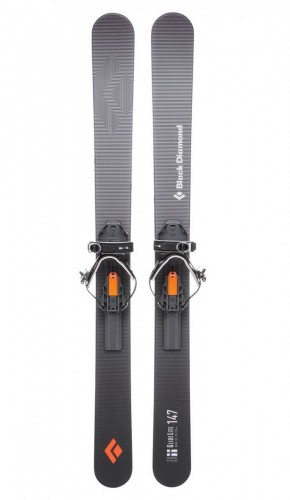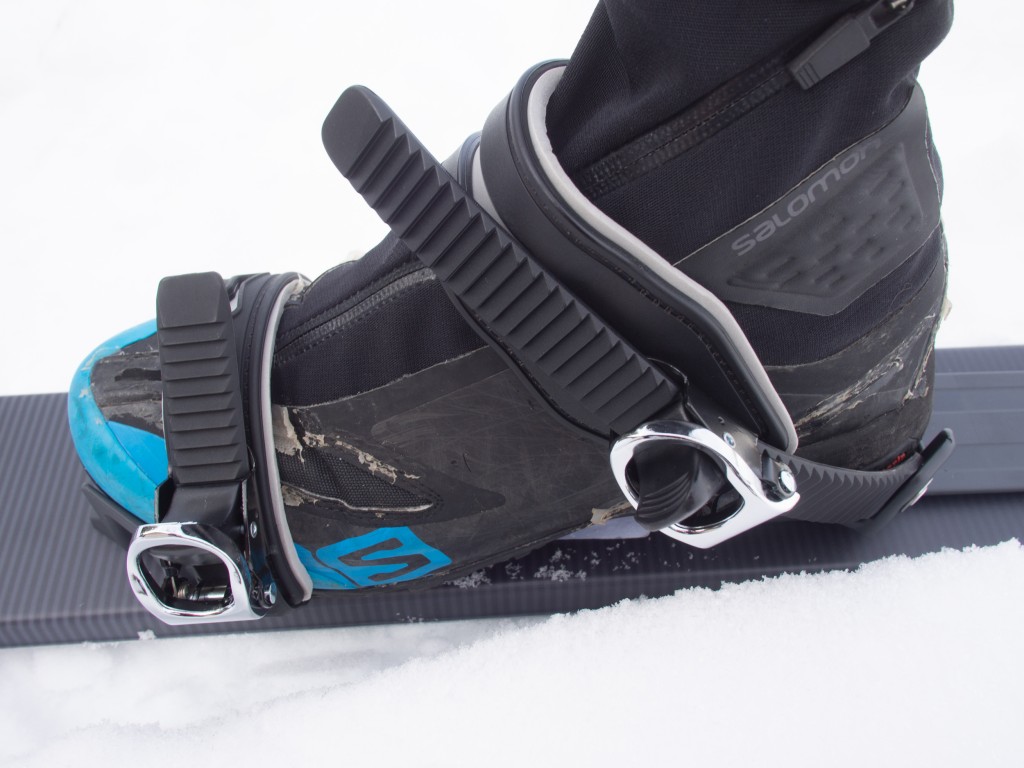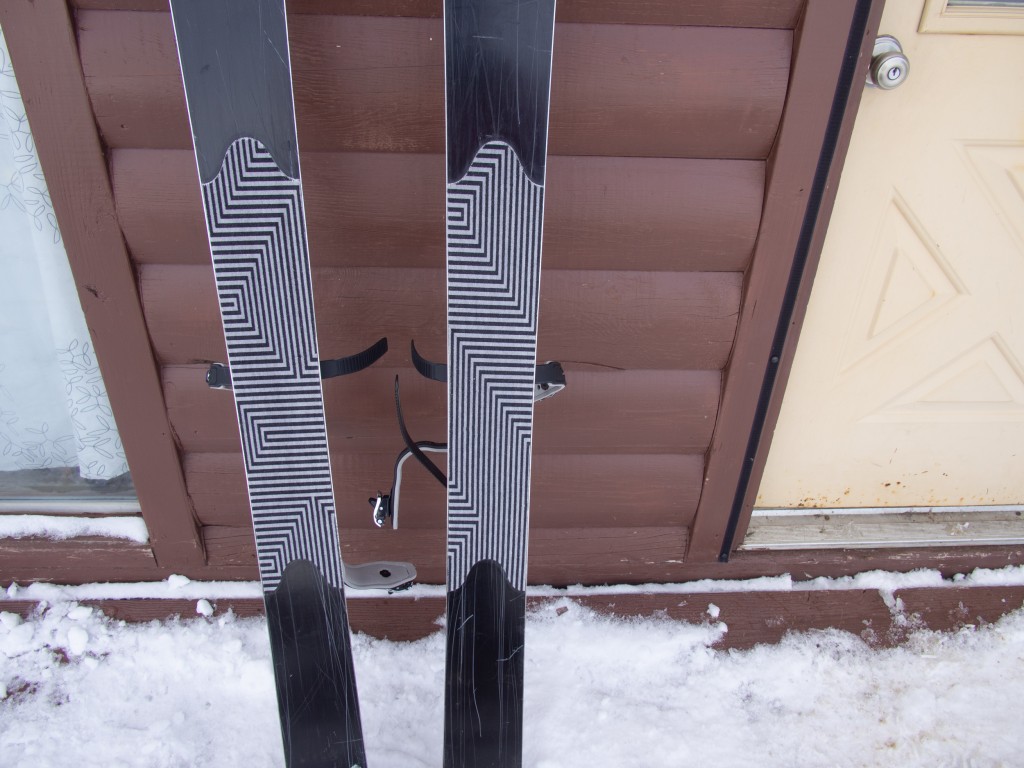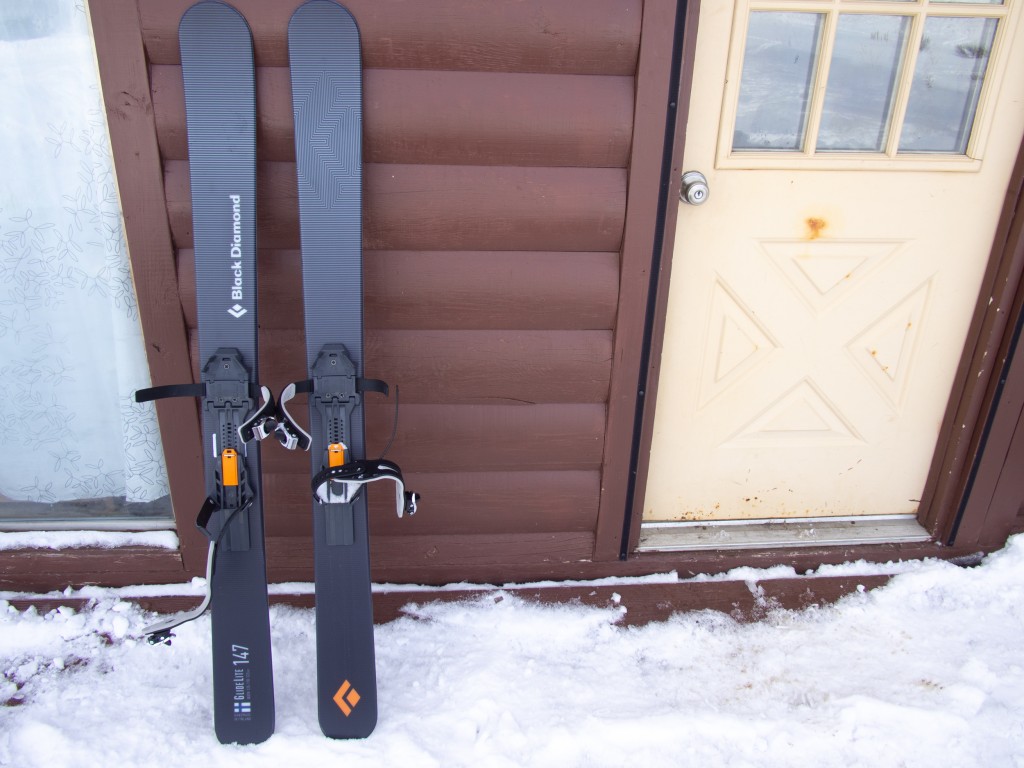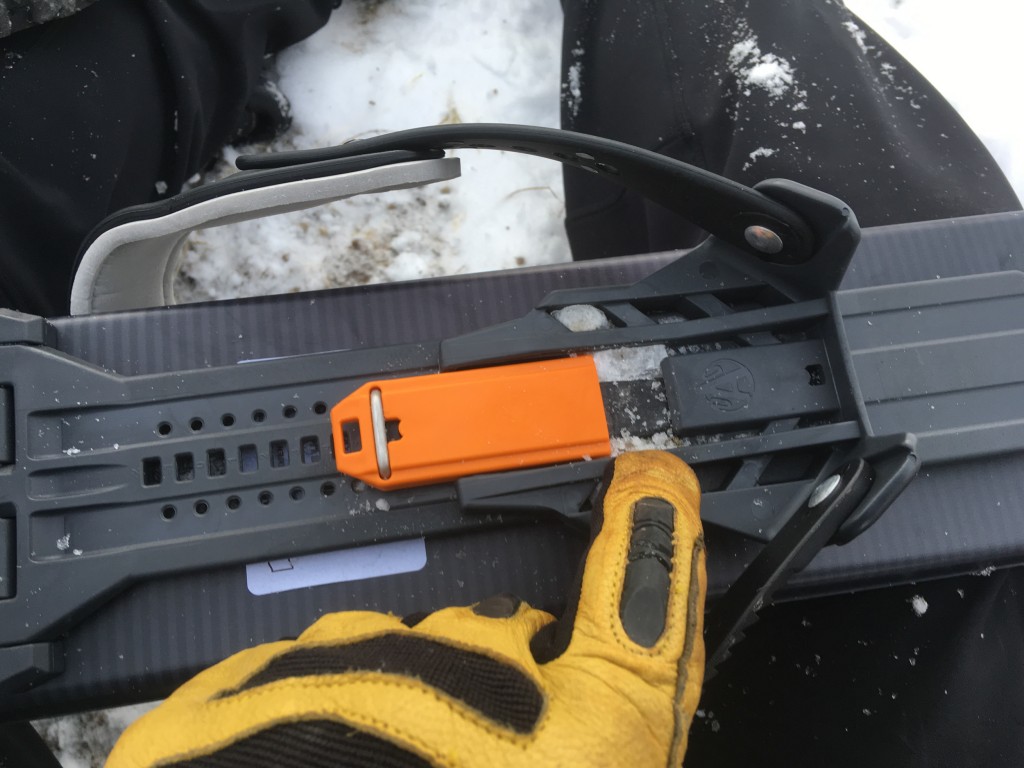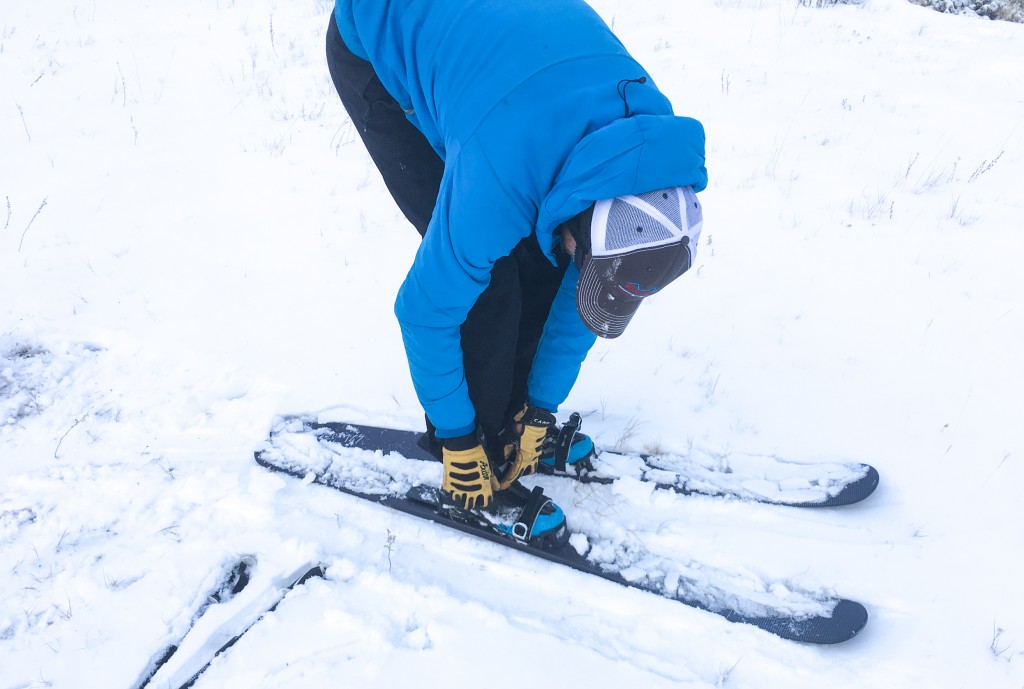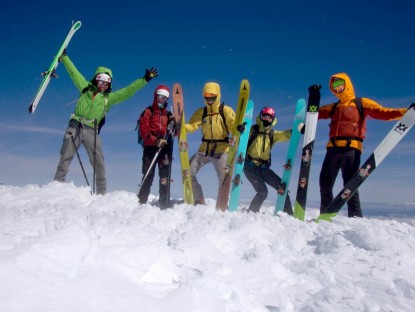Black Diamond Glidelite 147 Snow Trekkers Review
Our Verdict
Our Analysis and Test Results
On the US market, this is a brand new category of gear. Are they fast snowshoes, or slow skis? Are they for going downhill, uphill, or neither? Are they most similar to cross-country skis, AT skis, or those once-trendy "snow blades"? Because of the buzz around their release and because of their unique position in the market, we had to get ahold of a pair. Testing is easy and quite enjoyable.
As it turns out, where and when these skis excel is in low-commitment, casual adventures through meadows and valleys. Who doesn't love a stroll in the woods with slippery flotation on their feet? We have countless warnings and limitations to advise you about with the Black Diamond Glidelite 147 “skis”. We'll elaborate on all that below, but wrap up our summary by saying that there is no better product we know of for mellow (read: flat) wilderness ski exploration.
Mind the limitations, please. As encouraging as our prose and our award granting is, the Snow Trekkers have genuine limitations. On firm snow, regular cross country skis are better. Anytime the terrain is steeper than a typical road grade, dedicated AT skis are vastly superior. The best application - heck, the only real application - for these skis is short, low-commitment excursions on fresh soft snow and terrain that is no more confined or steep than your typical two-track forest road. Much exploratory skiing is available within these criteria. For that purpose, these are excellent tools to use. For anything else, select a different product.
Performance Comparison
It is a bold move to compare a niche product like this to your typical Alpine Touring backcountry skis. We only make these comparisons because you might be doing the same without the opportunity to try before you buy. At first glance, these seem like backcountry skis that are easier to set up, cheaper, and a little more maneuverable. That isn't the case.
In every way, for what most call “backcountry skiing”, any of the other skis we use are vastly superior to the Glidelite 147 Snow Trekkers. In exceptional circumstances, though, these are the best tool for the job. If you are headed out to mostly flat terrain, in fresh snow, with limited time to select, prepare, and maintain equipment and limited skills or time to acquire specialized skills, these skis are great. Their function and application are unique. This is a clever category of equipment, and for a variety of reasons, the Glidelite 147 is the best available.
In many ways, the Glidelite Snow Trekkers compare better to snowshoes. Throughout our testing and subsequent review, we found ourselves comparing them to snowshoes. Overall, the Glidelite Snow Trekkers are heavier than snowshoes and don't work as well on steep terrain. They are better than snowshoes in deep snow trail breaking and are much more efficient on flats, gentle ups, and low-angle descents. There is a slightly greater learning curve with the Snow Trekkers than with snowshoes of any sort.
Weight
The Glidelite 147 skis come equipped with universal bindings. To compare their weight to the other non-bound skis is misleading. On the surface, the eight pound skis seem like the heaviest in the test. Indeed, even when we add modern AT bindings to the other skis we tested, their weight is less than the bound Glidelite skis. Even this comparison, though, is not apt. With the Glidelite skis, you can use your own hiking boots. This alone saves a ton of weight and is truly different than anything else we have tested here.
At over eight pounds, including bindings and skins, this is not ultralight equipment. The lightest AT setups, including bindings and skins, are lighter and offer more control. Snowshoes also are lighter. The Editors' Choice MSR Lightning Ascent snowshoe is half the weight of the Snow Trekkers. Despite the weight penalty, in their intended conditions, the Snow Trekkers are more efficient. They glide better than any snowshoes and better than any skin-equipped AT skis. The ability to use lightweight, flexible hiking shoes further enhances efficiency in stride.
Stability at Speed
This is almost laughable, as they are not meant for high-speed sliding. To test, we took them on some screaming fast (relatively speaking…) packed-road descents. We were terrified. The good news is that they are not intended for that purpose. Even normal cross-country skis are better at firm and fast conditions, downhill. The Glidelite 147 Snow Trekkers are for soft snow shuffling, with just occasional short downhills. Very skilled skiers can make turns of sorts in excellent snow and on gentle (less than 15 deg or so) terrain.
Every single other AT ski we tested vastly exceeds the stability of the Black Diamond Snow Trekker. Any sort of speed on the Glidelite requires nerves of steel and well-developed skills.
Firm Snow
Again, this isn't what they are made for. The metal edges belie their actual performance. The main issue with firm snow performance is actually beyond the ski itself. The bindings are intended only for soft-sole hiking boots. The Glidelite Snow Trekkers come with explicit instructions to not use rigid boots in the bindings. Stiffer boots would ski downhill better, especially on firm snow. But those same stiff boots will damage the bindings with greater leverage.
All the other skis we tested work better on firm snow. We didn't test outside of the manufacturer's recommendations, but we do envision with good authority that the Glidelite Snow Trekkers would make better hard snow snowplow turns with stiffer boots. Regular mountaineering boots are the logical choice, but their rigid sole is recommended against by Black Diamond. Mountaineering boots would ski noticeably better in the Snow Trekkers than your typical winter hiking boots.
Powder
Perfect powder is the only situation in which even our highly skilled test team could make serviceable turns with the Glidelite Snow Trekkers. At the right pitch (about 15 degrees from horizontal), on open slopes and in ankle-deep, “graduated” powder snow, turns with the Snow Trekkers felt good and enjoyable. Deeper, steeper, or with any issues in snow consistency and the Snow Trekkers suffered and sent us back to survival skiing techniques. The real nice thing about powder skiing with the Snow Trekkers is that you can seamlessly go from uphill to down. To skiers accustomed to major boot and skin transitions, the lack of changeover is a welcome diversion.
Again, all the other skis go downhill in powder better than the Snow Trekkers. In fact, all the downhill characteristics are exceeded with other products. It is in powder snow that the Snow Trekkers get closest to the competition. The skinniest of tested AT skis only slightly edge out the Snow Trekkers in perfect powder. The difference is even less dramatic between these for unpracticed powder skiers. The skinniest AT skis require greater speed and energy in powder skiing than the Snow Trekkers. Beginner and non-skiers will actually enjoy the Snow Trekkers more than AT skis in powder because they do their skiing at lower speeds.
Because it doesn't fit anywhere else, we have to point out an issue with the bindings of the Snow Trekkers in powder snow. Loose snow works its way into the flexible mechanism under your foot and freezes there with repeated compression of each step. The growing ice prevents contraction of the spring-loaded aspect of the binding tension. The result is an ever-loosening binding as you ski. Periodic (once every hour or so) stops to clear the ice are required for secure attachment.
Crud/Poor Snow
Don't even pretend to try and ski downhill in tough snow on the Glidelite Snow Trekkers. If the snow is deep and slushy or with any sort of breakable crust, you will immediately revert to survival techniques like traverse-kick-turn moves, and desperate snow plow plunges.
Perhaps needless to say, by this point, that every other ski we assessed is better than the Snow Trekkers in tough snow. Again, though, an exception is for non-skiers. The short and wide stature of the Snow Trekker skis is suitable for super-low-speed survival techniques. Snowplowing and kick-turning are easier on these dimensions.
If you are a brand new skier, you will find that slow survival skiing is a little easier with the stubby Snow Trekkers than with “regular” backcountry skis. If you have any sort of downhill skiing skill or ability, regular backcountry skis will do better for you than the Snow Trekkers.
Value
As the only product like it on the US market (there are co-branded offerings that have different brands and names but are identical to the Snow Trekkers), these are a pretty good value. When you compare the cost of assembling a full backcountry set up of more traditional equipment, the value is huge. With the Snow Trekkers, you get skis, skins, and bindings (plus you get to use your regular winter hiking boots) for less than the price of just the skis should you choose even our Best Buy winner.
Conclusion
Heed all the above warnings and limitations, consider your actual usage, and ponder whether the Black Diamond Glidelite 147 Snow Trekkers are for you. If your ski adventuring is defined by soft snow, very gentle terrain, short excursions, and plenty of room to maneuver, these are just the ticket.


